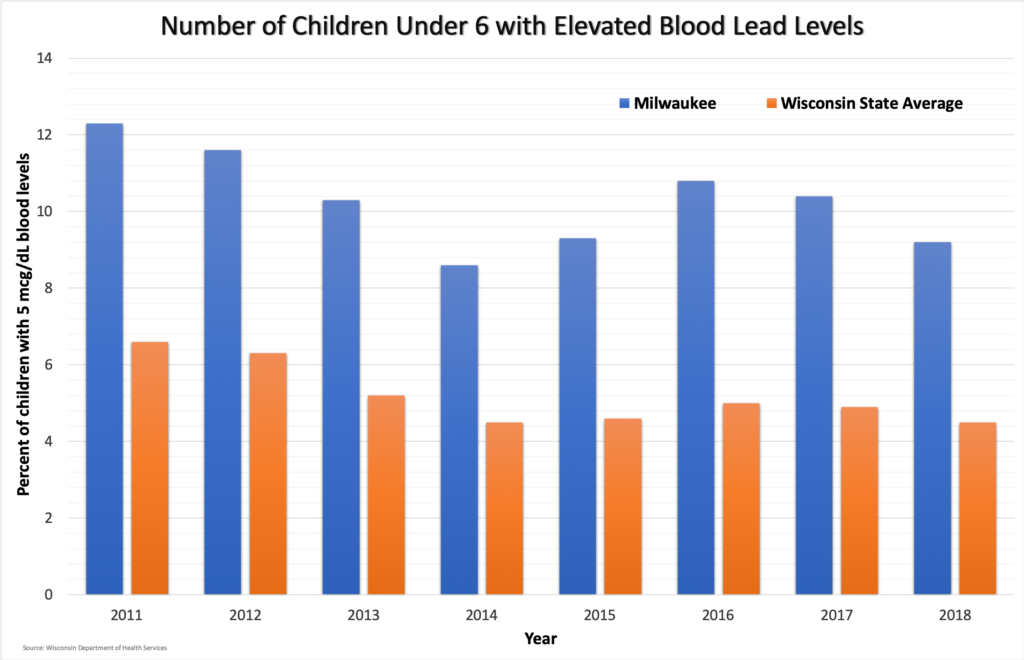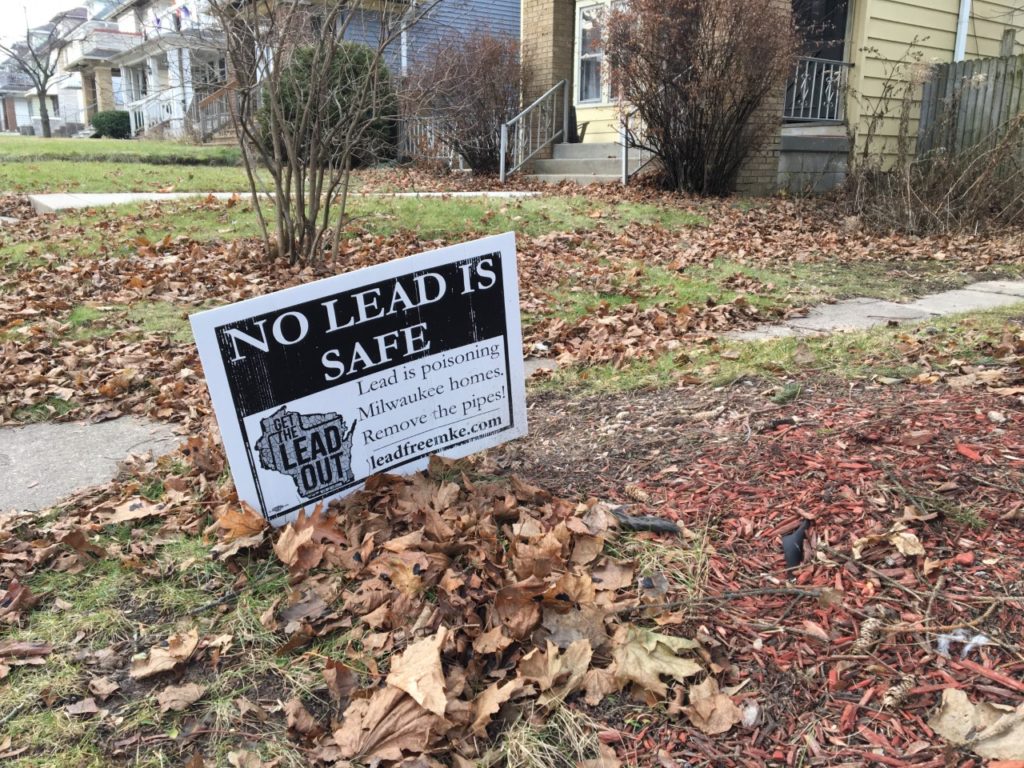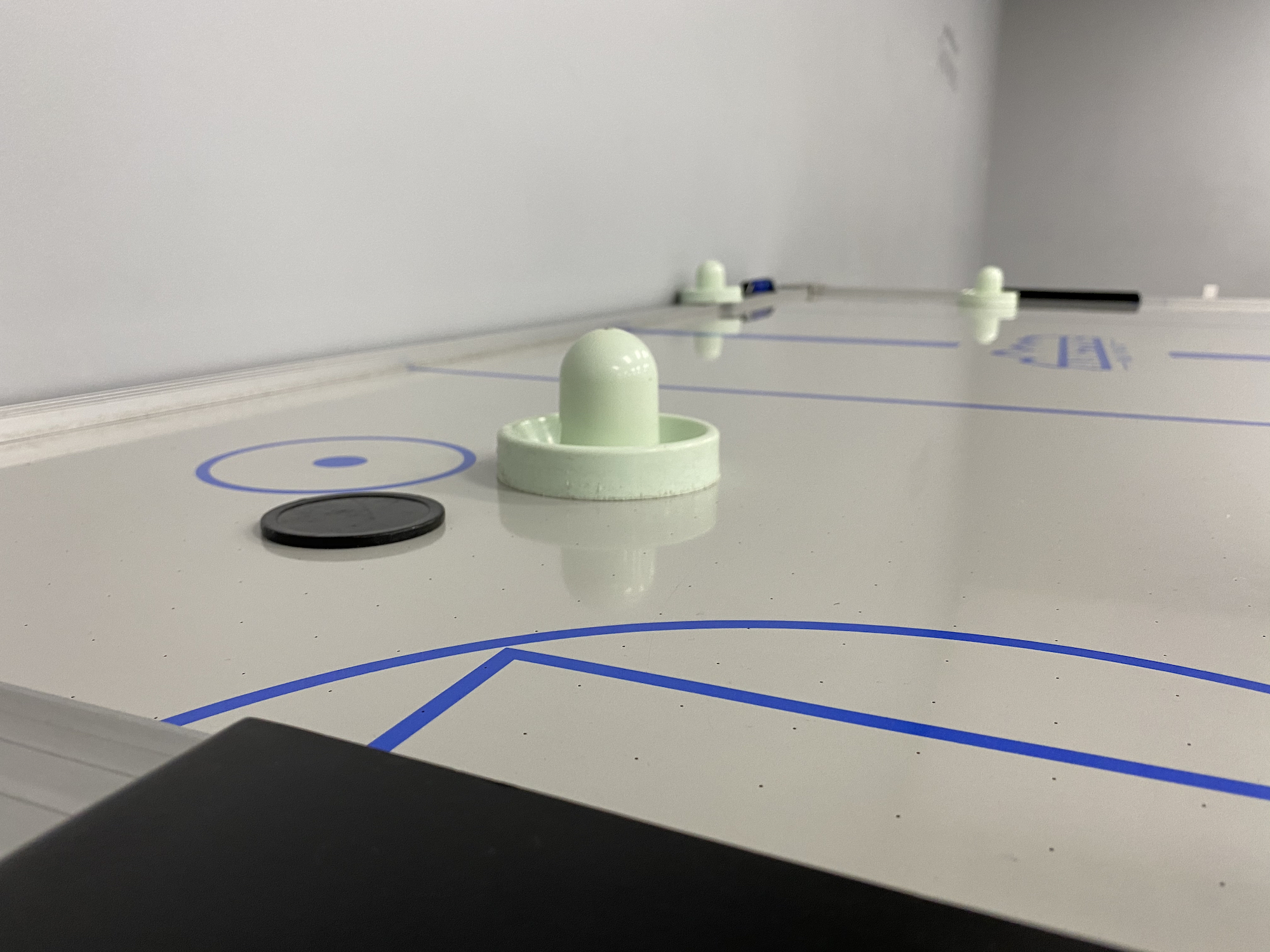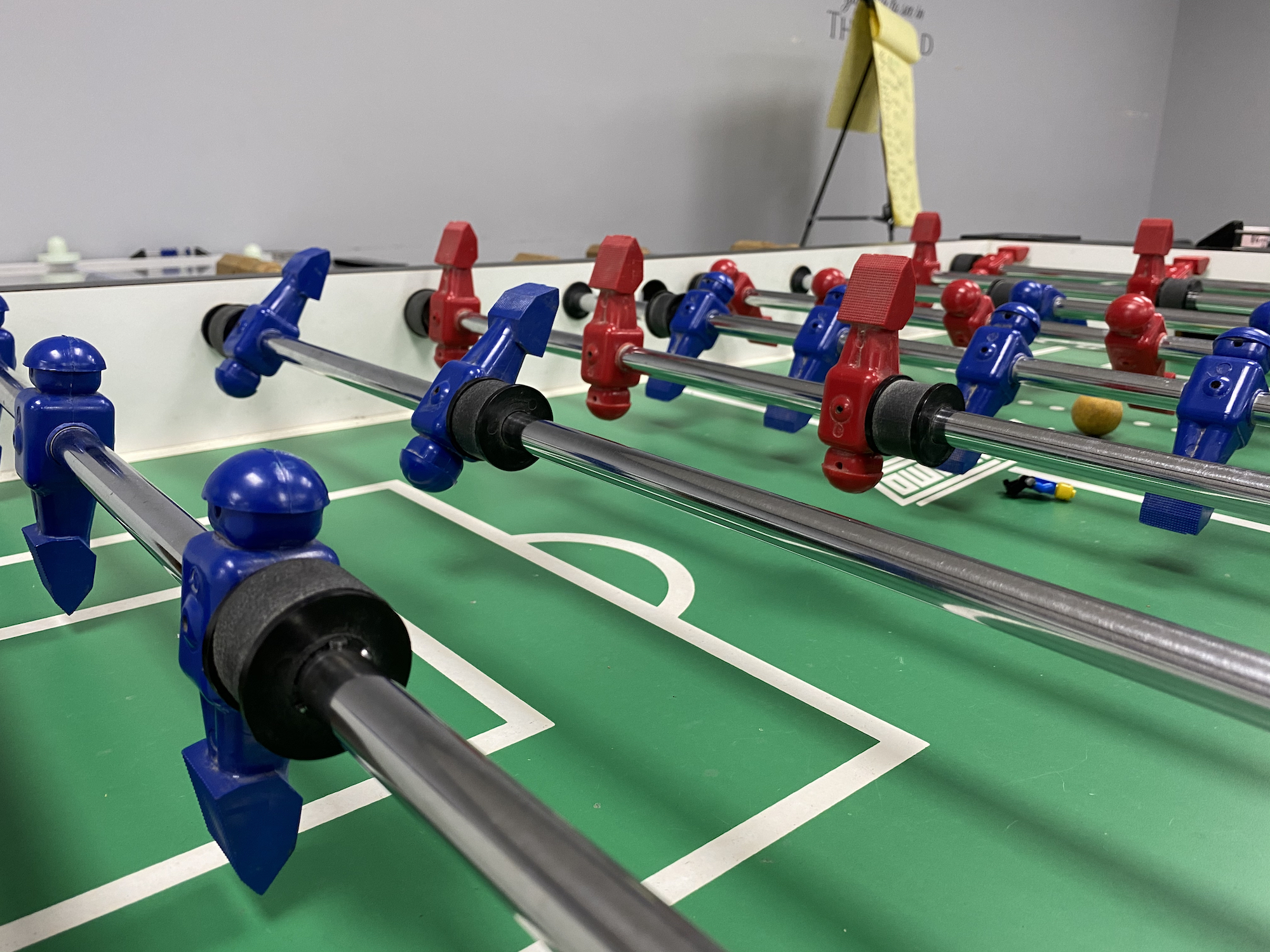When his child tested at levels two times higher than what is considered lead poisoning, Nazir Al-Mujaahid took action. He took action when his son experienced delayed development. He took action when his son’s motor skills were lacking. He notified the city that lead laterals were affecting his family. But the city did not take action.
Al-Mujaahid and his family live on the north side on one of the 75,223 properties in Milwaukee that have lead service lines. The city has proposed a sales tax referendum that’s working its way through the state legislature. If passed, the referendum would generate $40 million toward property tax relief and lead abatement, according to Milwaukee Mayor Tom Barrett.
Milwaukee complies with Environmental Protection Agency and state regulations regarding lead, a spokesperson for the mayor said.
“The 1% county-wide sales tax backed by Mayor Barrett, Milwaukee County leaders, the Metro Milwaukee Chamber of Commerce and the Greater Milwaukee Committee would dedicate millions in annual funding to lead abatement,” said Jodie Tabak, spokesperson for the mayor’s office .
However, critics don’t trust the city’s leaders to stay true to their promises. The city’s current goal is to remove 1,000 lead lines per year, but with over 75,000 lead laterals, it will take at least 75 years until Milwaukee is free of contaminated water. In 2017, 621 lead service lines were replaced. The following year, 931 were replaced. To date this year, 919 have been replaced, according to the Milwaukee Water Works.
“This hazard has been impacting families in these communities too long, and we need to remove them before another generation is damaged,” said Robert Miranda, spokesperson for the Freshwater for Life Action Coalition. “One thousand pipe removals are inadequate and will not do. Why should we as citizens wait and let three to four generations be destroyed?”
Effects of Lead
Exposure to lead and lead poisoning causes physical and mental problems. In 2018, nearly 26,000 children under age five were tested for blood lead levels in Milwaukee, according to the Wisconsin Department of Health Services. Of those, 2,365 children had lead levels at five or more micrograms per one deciliter of blood, which is considered lead poisoning. In the state, Milwaukee County has the highest rate of children with lead exposure, followed by Waupaca County at 8.5%, Sheboygan County at 7.1% and Ashland County at 6.4%.

Children’s in Milwaukee has one or two cases per month of children with severe blood lead levels of 45 mcg/dL, or 45 micrograms of lead per 1 deciliter of blood, according to Dr. Heather Paradis. However, there is a flaw in detecting lead exposure. Testing machines can only detect three mcg/dL and above, even though any lead exposure is harmful. People could be exposed to lead for years and not know about it until they start experiencing symptoms that could turn into long-term illnesses.
“There is no known safe level of lead in the body,” Paradis said.
“Over the past couple decades, as more evidence of the harmful long-term effects of lead has been published, the CDC has lowered the definition of elevated blood lead level,” Paradis said. “The current cutoff is 5 mcg/dL to consider a blood lead level to be elevated, though that may change in the future as testing becomes more precise.”

The physical symptoms of lead include abdominal pain, vomiting, constipation, hearing loss, seizures, headaches, high blood pressure and more. Mentally, lead poisoning can cause mood disorders, memory loss, developmental delays and learning difficulties in children and irritability, according to the Mayo Clinic. Chronic lead exposure in children are damaging to developing brains and nervous systems.
Al-Mujaahid’s son Shu’aib was 4 years old when he had an 11.5 mcg/dL blood lead level. He didn’t speak as much as other children and his motor skills were slower. The family determined the source of his lead poisoning was drinking water from the tap. The city had been offering free water filters, but they ran out of them. After bringing Shu’aib to a pediatrician, Al-Mujaahid and his wife used charcoal, vitamin C therapy and calcium magnesium to try to reduce his lead levels.
“Water’s not just about drinking,” Al-Mujaahid said. “We wash dishes, we take showers, so we absorb it in a number of different ways. I was trying to minimize the exposure to at least the drinking part of the water.”
A recent study by UWM’s Joseph J. Zilber School of Public Health found a connection between childhood lead poisoning and violence. The study looked at public health, education and criminal justice datasets of more than 89,000 people born in Milwaukee between 1986 and 2003 who had a blood lead test before they were 6 years old.
Lead exposure impairs decision-making and increases impulsiveness, traits that influence criminal behavior. The study found that children with elevated blood lead levels had a greater risk for becoming a criminal or victim of gun violence. Additionally, 56% of perpetrators and 51% of people who were shot or killed by a gun had elevated blood lead levels as children.
Al-Mujaahid believes race is a big factor in the city’s reluctance to replace the lead service lines in certain areas. Milwaukee is ranked the most segregated city in the U.S., according to a study by the Brookings Institution, a nonprofit public policy organization.
“Milwaukee, I consider it the Jim Crow of the north,” Al-Mujaahid said.
Al-Mujaahid has worked to address that inequality as outreach director at the Ma’ruf Youth Innovation Center, designed to be a positive outlet for young men. Located on the city’s north side, the center has hosted child day camps over the summer, movie screenings, events with the American Civil Liberties Union, ACT test preparation and more. The center also has a Malcolm X library, Muhammad Ali gym and a new barber shop.
Established in 2008, the Ma’ruf Youth Innovation Center is dedicated to improving the quality of life for Milwaukee’s most marginalized communities. The center offers tutoring, leadership development, counseling, martial arts training and more.
“Old housing and lead service lines are present in neighborhoods of every economic status and racial makeup, but lead poisoning is not distributed proportionally,” said Jodie Tabak, a spokesperson for Mayor Barrett. “Poor maintenance by landlords in low-income neighborhoods and the difficulty for fixed-income owners are two common reasons for that correlation.”
City of Milwaukee Actions
In October, Milwaukee received $5.6 million from a Lead Hazard Control Grant the city won from the U.S. Department of Housing and Urban Development.
Mayor Tom Barrett announced he was running for a fifth term as mayor on Nov. 20. He proposed to allocate $2.2 million for lead abatement from 2020 Community Development Block Grant funding on Dec. 1. The proposed Block Grant allocation will be heard by the Common Council’s Community and Economic Development Committee and be voted on by the full council on Dec. 17.
The city has a lead service line replacement program in place. Property owners can use the city contractor to replace the service line and share the cost with the city. Homeowners pay $1,600 instead of the average full cost of over $6,000. They can either pay in full upfront or through the special assessment financing over 10 years. Because lead pipes are largely in poor, minority areas, Al-Mujaahid says this program isn’t solving anything. He and his family are tenants, not property owners, so they can’t use this program even if they could afford it.
“It’s another oppressive policy. It’s kind of like putting a Band-Aid or suggesting you put a Band-Aid on something that you mandated and required be done by law,” Al-Mujaahid said. “The city should be responsible for replacing the 70 some thousand lead laterals that they mandated be in these homes and stop wasting a lot of our taxpayer money doing other projects and making sure things look pretty downtown.”
Barrett’s 2020 budget proposal in September included more than $21 million for reducing lead exposure, including over $8 million for lead abatement in homes where children have been affected and $13.6 million for lead service line replacement, testing and filters for at-risk homes. Next year, Barrett’s budget calls for doubling the number of lead-abated homes.
The budget also mentions the sales tax referendum, which Barrett hopes will reduce Milwaukee’s lead problem. Backed by the Metropolitan Milwaukee Association of Commerce and the Greater Milwaukee Committee, the referendum would abate 300 more homes per year and replace 300 more service lines per year. If the referendum is passed by state legislature, Milwaukee County residents would vote in April for a 1% sales tax increase to generate revenue.
The proposal was introduced in the state assembly and senate by Rep. Evan Goyke and Sen. LaTonya Johnson in October. Since then, the bill has been referred to relevant committees in each branch that will research the impact of the bill: the Ways and Means Committee in the Assembly and the Agriculture, Revenue and Financial Institutions Committee in the Senate.
Al-Mujaahid believes it’s all talk. After he and his family were interviewed by multiple news outlets and spoke out at events advocating for the removal of lead, the city came to their home and tested their pipes for lead three different times. All three results came back positive.
“They did nothing. Nothing,” Al-Mujaahid said.
Sen. Lena Taylor, D-Milwaukee, doesn’t think the bill will pass in the Republican-controlled Wisconsin legislature.
“This is not our first time. I’ve championed that issue multiple times at the state level,” said Taylor. “We actually even had a referendum before, and it was not respected by our Republican colleagues, and I think suggesting that that’s going to happen in this season is slim to none.”
Leaders React
With the mayoral election on the horizon, candidates are campaigning on the lead issue.
Alderman Tony Zielinski issued a press release about funding for lead abatement under Mayor Barrett, ridiculing investment in the city’s new light rail line, The Hop, on its one-year anniversary. Zielinski said the sales tax referendum won’t be approved because of Barrett’s “discretionary spending” on The Hop.
“The Mayor is celebrating the streetcar while vulnerable children are being affected by exposure to toxic lead that can impact them for the rest of their lives, both physically and mentally,” Zielinski said.
Similarly, Robert Miranda, the Freshwater for Life Action Coalition spokesperson, says Barrett favors ribbon-cutting events over giving people clean water.
“Elected leaders don’t really understand that the lives of families in this community should matter as much as building a new building for sports teams to play in,” Miranda said. “This is shameful, and people should be waking up to the fact that the debate is no longer an issue. The issue is when are we going to put resources in removing this lead.”

Sen. Taylor said the city’s plan to remove 1,000 pipes per year is inadequate.
“It would take us more than 70 years; that’s an unacceptable goal,” she said. “We need a plan to be able to remove the lead laterals, and that plan has to be much more aggressive.”
Al-Mujaahid’s son Shu’aib is now 7 years old and continues to deal with the effects of lead exposure. He has stopped drinking the tap water in their home. Last summer, he was tested again and was at 3.8 mcg/dL. That number is below the 5 mcg/dL threshold that is officially considered lead poisoning. Though he stopped drinking the lead-contaminated water, he is still being exposed to it in other ways, and there isn’t a safe level of lead in the body. While his motor skills have started to pick up, he’s not as advanced as his siblings were at his age, Al-Mujaahid said.
With the approaching mayoral election, Robert Miranda hopes for change.
“Once we start removing these neurotoxins from the house, from the water, then we should start seeing crime lowering, dropout rates dropping, graduation rates increasing, safer neighborhoods, productive citizens,” he said. “We should be spending the money today so that tomorrow we see a brighter future for our neighborhoods.”










